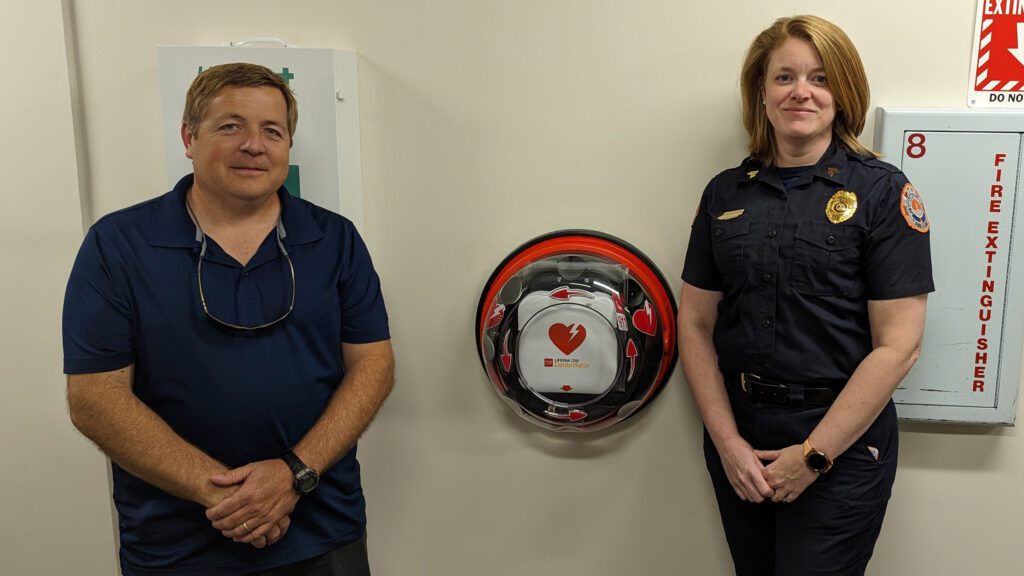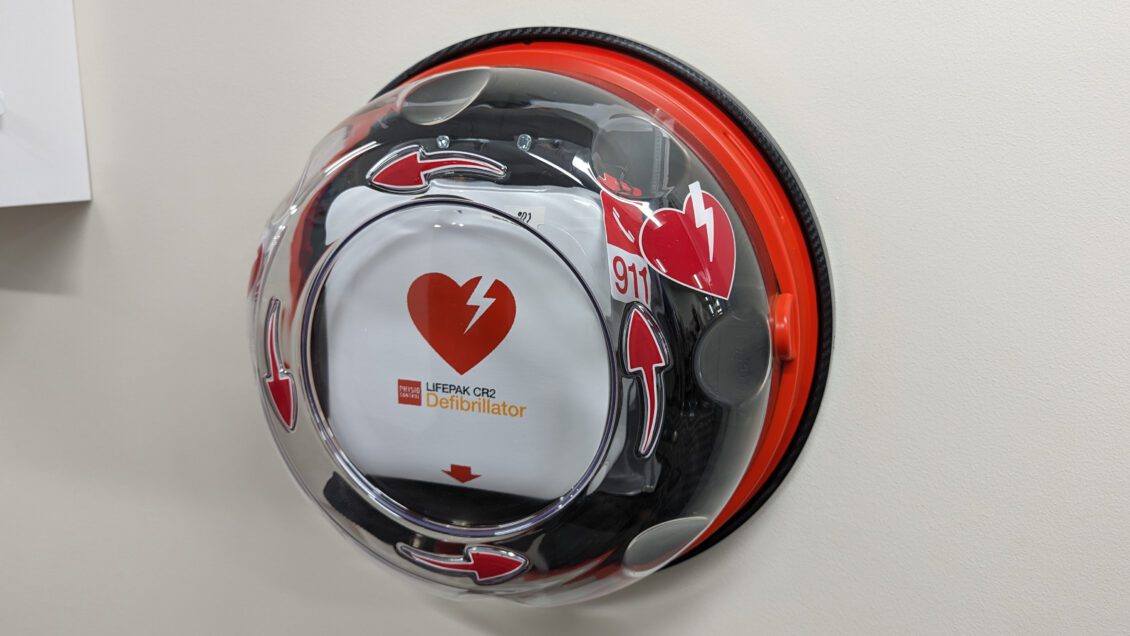The Clemson University Fire & EMS Department (CUFD) and the Facilities Department have partnered to install new automated external defibrillators (AEDs) in key facilities-related locations in and around Clemson’s main campus.
“We are excited to be partnering with our colleagues in Facilities to bring more accessible AEDs into our workspaces,” said Clemson University Fire Chief Rick Cramer. “After all, early defibrillation is one of the main components in the chain of survival for cardiac arrest.”
Facilities is currently in the process of installing 16 new devices that will provide quick and easy access for facilities’ employees working in those areas, increase the current campus AED capacity and potentially save lives.
“Last year, I heard Public Safety staff talk with the Emergency Management Council about the life-saving impact that AEDs can have,” said Associate Vice President and Chief Facility Officer Todd Barnette. “With 400 University Facilities’ staff spread across campus, it seemed logical that we should look for locations that would give our staff, and others we serve, an opportunity to access these life-saving devices.”
CUFD Sergeant Jennifer Thackston, who manages the AED Program at Clemson, and Facilities Safety Training Coordinator Tim Nix have worked closely together to get the devices set up and installed in the key locations they identified during this process.
“I am so grateful to Jennifer Thackston and Tim Nix for their efforts in identifying locations and to others in Facilities that helped with installations,” Barnette added. “Public Safety and Facilities continue their ongoing partnership built around making a safer Clemson University for all.”

The new AEDs feature continuous self-monitoring to ensure the device is always rescue-ready. In addition, they are Wi-Fi enabled, allowing CUFD to monitor the devices remotely to view the status of the device, as well as battery and electrode information. If a device is used, emergency professionals can obtain a clear picture of the cardiac arrest before arriving on the scene, allowing them to be as prepared as possible for rescue upon arrival.
Of the 16 new devices scheduled to be installed, 12 are already in place and ready to be used if needed. According to the American Heart Association, only 50% of employees know the location of an AED at work. To find the nearest AED to you, visit the Clemson AED program page to view a map of all AEDs at Clemson University sites or download the PulsePoint AED app.
What is an AED and when should it be used?
AEDs provide a critical role in the chain of survival in the event of a sudden cardiac arrest. Recognizing the signs of sudden cardiac arrest, calling 911 and providing early CPR, combined with the use of an AED, increase the chances of survival.
First, a person suffering from a sudden cardiac arrest will be unresponsive with no normal breathing or pulse. When a person goes into cardiac arrest, immediate Cardiopulmonary Resuscitation, or CPR, is needed.
Many people also need an electric shock, also known as defibrillation, to restart their heart and improve their chance of survival. The AEDs provide those shocks.
Studies show that early CPR and AED use, whether by a medical professional or a bystander, can double or even triple a person’s chance of survival. The American Heart Association says 9 in 10 cardiac arrest victims who receive a shock from an AED in the first minute live.
While you do not need to be certified to use an AED, CUFD encourages everyone to complete a CPR/AED training course to learn how and when to use an AED.
The most important thing to remember is to turn the AED on. Once the AED is turned on, the device will provide clear audio instructions to tell the user exactly what to do.
It is important that those that are responsible for an AED receive formal training on the AED model they will use so that they become familiar with the device and are able to successfully operate it in an emergency. Training also teaches the operator how to avoid potentially hazardous situations.
For more information on CPR and AEDs, including videos and training, visit the American Heart Association website.

